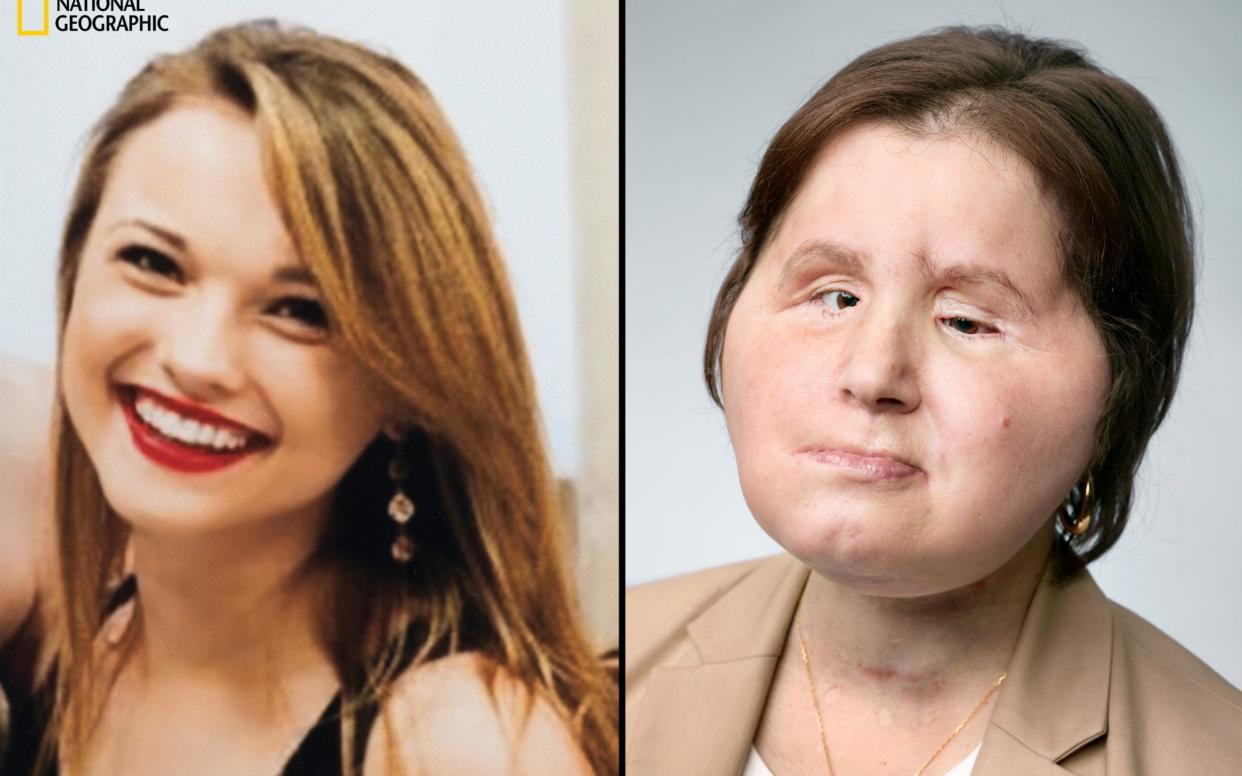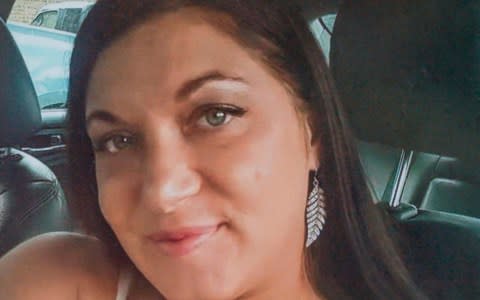American 21-year-old becomes the youngest person in the US to have a face transplant

An American woman has become the youngest person in the US to receive a face transplant, after shooting herself in the face in an attempted suicide when she was 18.
Katie Stubblefield, now 22, is featured on the front cover of this month’s National Geographic.
In March 2014, depressed and suffering from a series of medical problems, she shot herself in the face with her brother Robert’s rifle at his home in Tennessee.
Mr Stubblefield said he found her covered in blood, with her face “gone.”
The bullet tore through her forehead, nose, sinuses, jaw bones and badly damaged her eyes. Surgeons responsible for saving her life in Memphis attempted to cover her facial wound using a tissue graft from her abdomen, but failed, and she arrived at the Cleveland Clinic with “her brain basically exposed.”

Miss Stubblefield underwent 22 different operations to try and repair the damage, but doctors were unable to satisfy their patient, who was in despair, and referred to her face as Shrek.
“Things happen in life that shatter us to pieces,” said her father, Robb. “But it’s where we go from there.”
After three years of waiting, and after two potential donors fell through, a donor was found.
Adrea Schneider, a 31-year-old woman who had recently died from a drug overdose, was a registered organ donor.
Her grandmother Sandra Bennington gave consent for the donation, and Miss Schneider’s heart, lungs, kidneys and liver were also donated to other patients - saving at least seven lives across the US.
In May 2017 Miss Stubblefield underwent a 31-hour surgery at the Cleveland Clinic in Ohio,

becoming the 40th person in the world known to have received a new face.
The youngest person ever to receive a face transplant is believed to be a Turkish man, Ugur Acar, who was 19 when he was operated on in 2012, to provide him with a new face after being badly burnt in a house fire when he was a baby.
Dr Brian Gatsman, who oversaw a team of 15 specialists, and said the bullet that hit Miss Stubblefield caused a traumatic brain injury and severely impacted her hormones and sodium levels, as well as frontal lobe function.
His team helped create a nasal passage for Miss Stubblefield, as well as patch her face and form jawbones using her fibula calf bone and titanium. They moved her eyes closer together with a device that had to be tightened daily, and took part of her thigh and Achilles tendon to help cover the wounds.
Her surgery was paid for by the US department of defence through the armed forces institute of regenerative medicine, in an effort to improve treatment for service members who are wounded in battle and come back with similar injuries.

“Her injury may have been the worst injury of any face transplant injury ever,” he said.
“We can’t necessarily make all of her muscles move again. Her tongue is not working well because she lost a lot of tongue muscle and nerves.”
But, he added, the team were delighted with the outcome.
“We all like her nose,” he said. “Her lips are pretty.”
Ms Bennington, the donor's grandmother, has recently met Miss Stubblefield, telling the young woman: “You look beautiful.”
She said she could see elements of her granddaughter, but that the face was truly Miss Stubblefield’s.
Fourteen months after the procedure, in July this year, her doctors had completed three major revision surgeries and are still likely to slim her face, reduce scarring, and improve her eyelids. Over time her face will continue to regain function.
“I get a second chance at life now,” she said. “This is the beginning of another chapter.”

 Yahoo News
Yahoo News 
